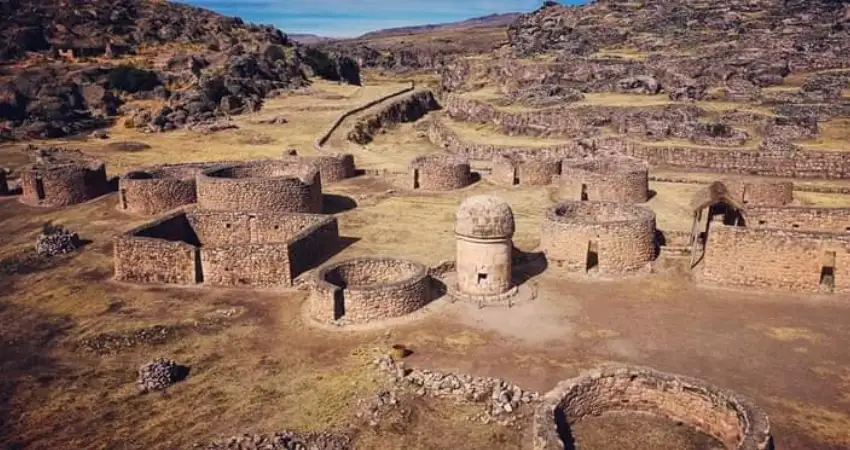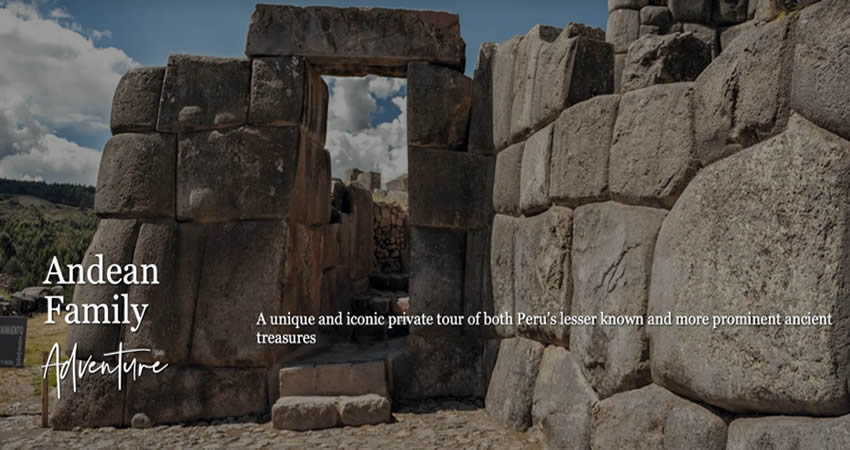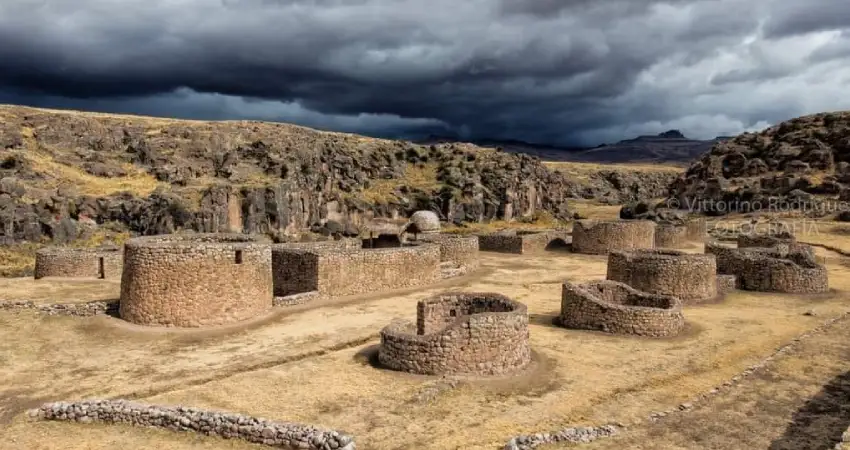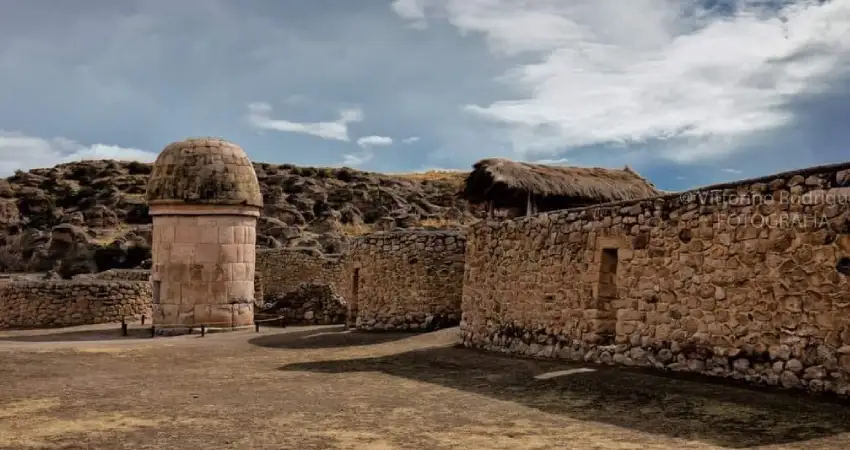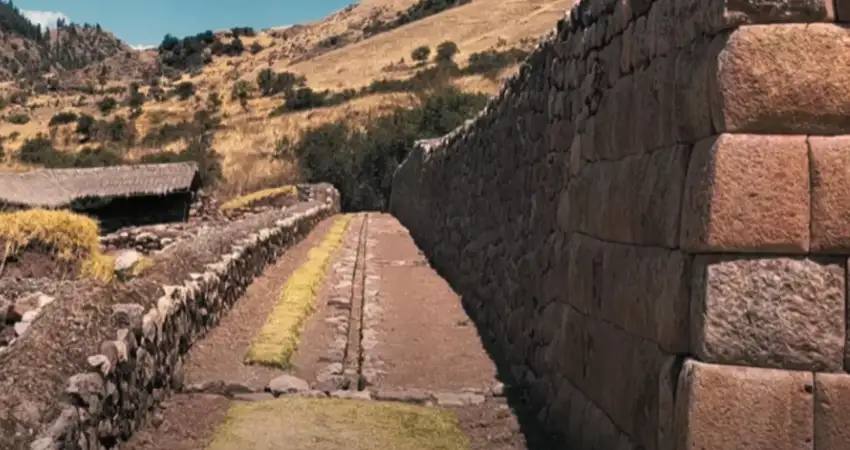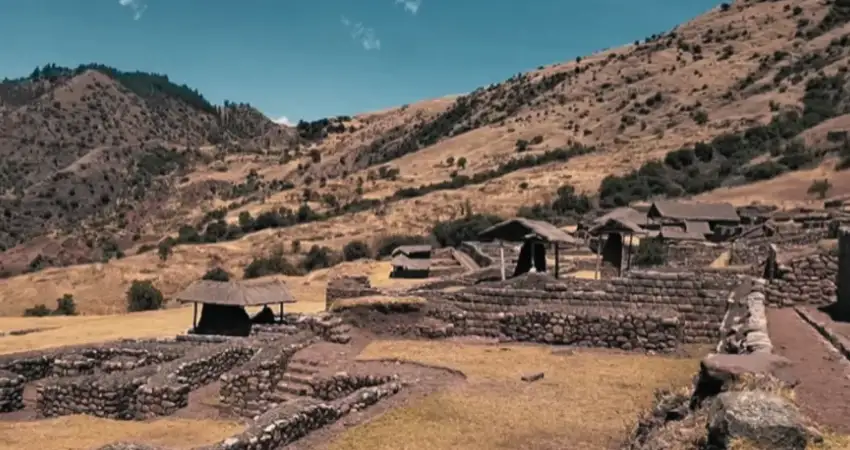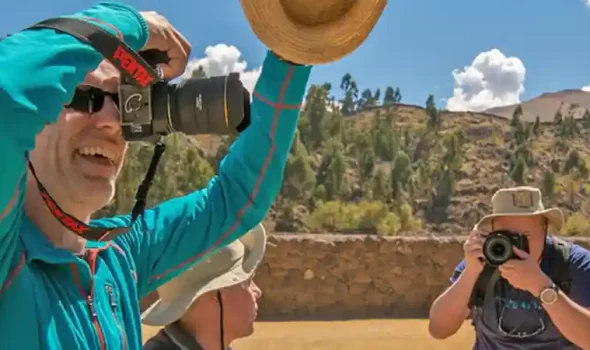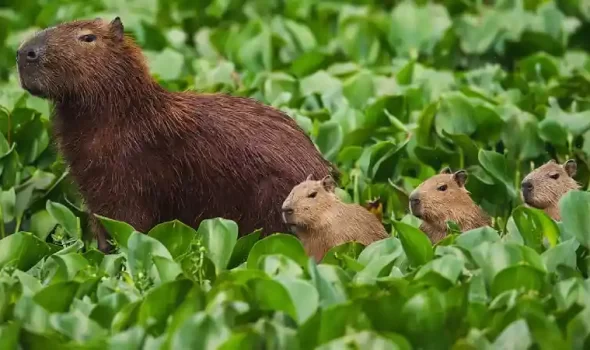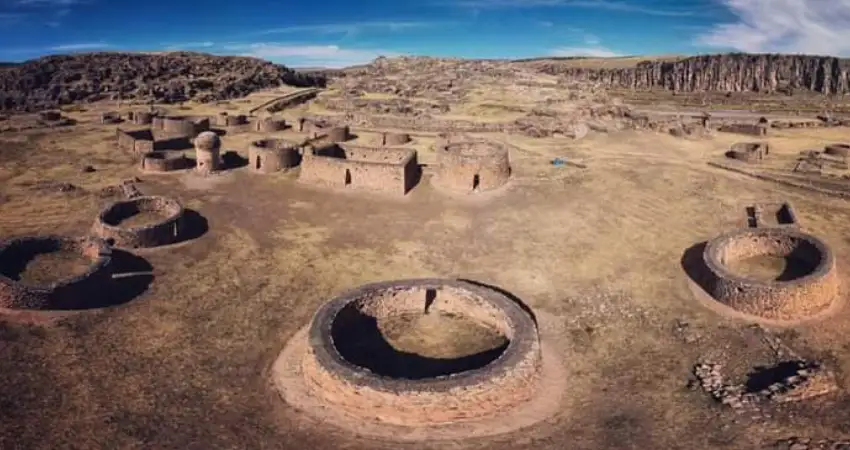
1.- OVERVIEW OF MAUKALLAQTA CUSCO
Maukallaqta Cusco is located in the community of Manturca which is more than 20 km from the Yauri sector, in the Cusco region. At one end of the Apurimac River, Maukallaqta Cusco is located at 3360 meters above sea level and belonged to the domains of the Wari culture. Inside Maukallaqta Cusco it is possible to find incredible structures mainly belonging to funerary use as Chullpas, urban sector where there are houses and a
collection of terraces.
In addition, something very particular that can be found in Maukallaqta Cusco is that it is surrounded by a beautiful forest and gives you an incredible view of the mountain range or things which have an infinite presence of straw which is a type of plant that grows in the Peruvian Andes, after investigations it was determined that Maukallaqta Cusco was considered as an urban center. The name Maukallaqta Cusco comes from 2 Quechua words, the first one is Mawka which represents something old and Llaqcta which is town which results as “old town”.
2.- A PART OF THE INCA CULTURE
“An interesting point of history is that Maukallaqta Cusco was made known thanks to the Spanish chronicler Pedro Cieza de Leon who called it one of the five oracles existing at the time.”
3.- HISTORY OF MAUKALLAQTA CUSCO
Peru is a multicultural country not only because of the current migrations but also because of the large number of ethnic groups that existed long before the Inca culture, this is how the K’ana were born who settled in the pampas of Suero who built what today is known as Maukallaqta Cusco, this culture was pre-ceramic so there are no records of legacies in these items are belonging to the Paqarimuq Runas time.
They were the first ayllus who inhabited these areas, these ayllus were the Pomacanchi, Quipillacta, Chacra, Chiriuna, Pomacanchi and later integrated the Coporaque who were finally subdued by the Canas, while confronted with ethnic groups to have a domain of this territory. What many do not know is that Maukallaqta Cusco initially had the name of Hanq’oqawa and was part of the Hanansaya, which in ancient times was the capital of the entire K’ana territory.
Later in history all this territory would be conquered and subdued by the Wari culture who influenced its constructions but at the same time on their beliefs by implementing a religious worship center and a funeral sector mainly destined for the nobility. It was very easy to differentiate the constructions inside Maukallaqta Cusco, because the rectangular constructions were elaborated for social, ceremonial and ritual use, in fact it was here where you could find mallquis (mummies of former members of the nobility). On the other hand, the circular enclosures that can still be seen in Maukallaqta Cusco were intended for urban and administrative use, here you can see the enclosures used as homes or as storage centers.
Something particular that also does not go unnoticed in Maukallaqta Cusco is that the buildings are made entirely of stone and mud, having between 4 and 6 meters in size, but what stands out most during visits to Maukallaqta Cusco is certainly to know closely the Chullpas that had a completely funerary function during the Wari culture, these buildings have a height of more than 3. These buildings have a height of more than 3.5 meters and is where the mummies of the ancient rulers were kept, characterized by a vaulted dome at the top giving it an incredible appearance.
It was only during the mandate of the Inca ruler Lloque Yupanqui that all this sector and the Canas were completely subdued and secured to the dominant culture, in this way strategically implemented systems of administrative, political, economic and religious control, directing all efforts to livestock and mining in the sectors that are now known as Ocopampa and Arcata. Then during the government of the successor Viracocha all the inhabitants of this area including those who inhabited Maukallaqta Cusco became very important allies of the Incas being their main suppliers of meat and wool, they also produce weaving products and provide quinoa and kañihua.
Currently Maukallaqta Cusco is considered one of the main archaeological centers of Cusco for its state of preservation, however by name it is easily confused with others such as Paruro or Arequipa, however what characterizes Maukallaqta Cusco is that in addition to the incredible buildings also has double jamb doors which according to Andean belief is the access to a very sacred place, plus 2-story houses, ceremonial fountains, courtyards, water channels and others.
4.- ALL THAT MAUKALLAQTA CUSCO OFFERS YOU
For the location that has Maukallaqta Cusco is associated with a religious center also for being quite close to the Apurimac River in addition to the existence of the Chullpas, being considered as the oracle of the south where people could share a space with the dead ancestors, among the main buildings that can be found in Maukallaqta Cusco are:
4.1.- Kallanka Inca
Popularly known as Tambo or royal house and is a building of 2 levels with rectangular base and gable roof, mainly used as shelters or lodging for travelers who traveled the roads of the Qhapaqñan, were also useful for public meetings and social ceremonies.
4.2.- Terraces
The terraces are a symbol of presence of the Inca culture mainly, in this case unlike other places, the terraces played a role of support to the land that existed, not so much with an agricultural purpose. Thanks to the terraces it was possible to stabilize the terrain and build the rest of the important places such as enclosures, chullpas and plazas.
4.3.- Chullpas
Undoubtedly in all the archaeological center of Maukallaqta Cusco this is the main attraction as well as the most incredible. From the first moment of your visit, these funerary towers will undoubtedly catch your attention. Among these stands out that is located in the main square of Maukallaqta Cusco. The structures were built from blocks of ashlar that were carved and unique with mud. They are circular in shape and have a small door and windows where the mallqui or mummy of the rulers who died was kept.
4.4.- Enclosures
They are structures that are still standing and keep part of the essence of the different moments in history, from the per-incas to the colonial era, you can even see how one of the houses was transformed into a well-preserved colonial chapel.
4.5.- Plazas
Quite representative of the culture, being an open space it was destined more for social events where reciprocity was practiced through rituals and ceremonies in honor of festive moments where drinks and dances were enjoyed, essentially destined for the nobility that existed at that time.
5.- HOW TO GET TO MAUKALLQTA CUSCO
To get to know Maukallaqta Cusco requires at least 1 full day for the distance in which it is located, the first thing is to get a transport that can take you to the sector of Yaurisque, the trip on average day 1 hour, upon arrival you can take advantage of the time and the nearby stores to have breakfast calmly and stock up with food, drinks and snacks. When you are ready you can continue the trip to the town of Mollebamba, this trip also lasts 1 hour. From this point begins the adventure for those who are passionate about hiking, you follow a trail to the archaeological center of Maukallaqta Cusco, depending on your walking pace it can take between 1 hour or a little more to arrive.
| “People who travel a lot tend to be more adventurous, and definitely much happier.” |
For this you can do it personally looking for a private transportation or with a travel agency, although the tours to Maukallaqta Cusco are not frequent there is always the possibility of opting for a private experience that will be much more complete and comfortable for you as it will include all the important details and you will not have to worry about anything, you will even be accompanied by a professional guide specialized in the history behind Maukallaqta Cusco.
6.- BEST TIME TO VISIT MAUKALLAQTA CUSCO
Of the 2 climatic seasons that exist in Cusco, the best without a doubt to visit Maukallaqta Cusco is the dry season that occurs between May and October, are the months in which you can expect a sunny and pleasant day without the risk that suddenly changes by rains, is the most stable season in weather conditions. It is also the right time to enjoy adventure sports such as canoeing or kayaking which gives you the opportunity to enjoy the beautiful scenery.
The beauty and history of Maukallaqta Cusco is waiting for you, now you know how easy it can be to complement your travel experience in a different way. Auri Peru can organize a personalized trip to this place in a suitable way, contact us now and we can make your dream trip come true.
“People who never risk traveling die without knowing what the world is really like.”




